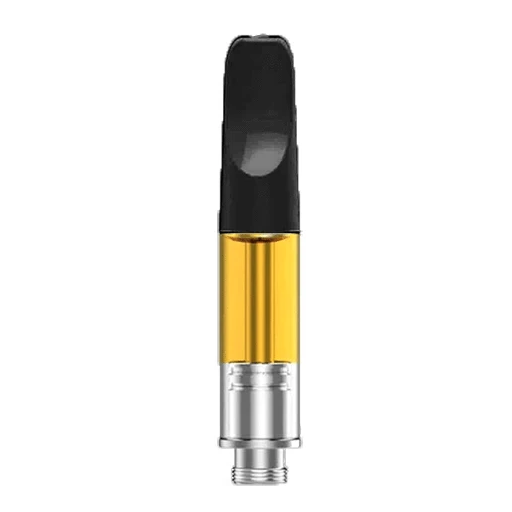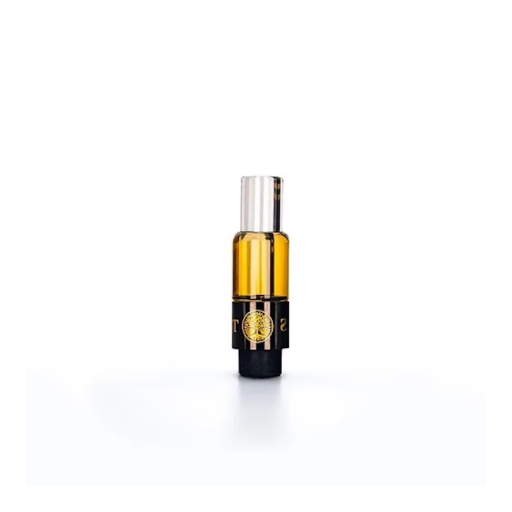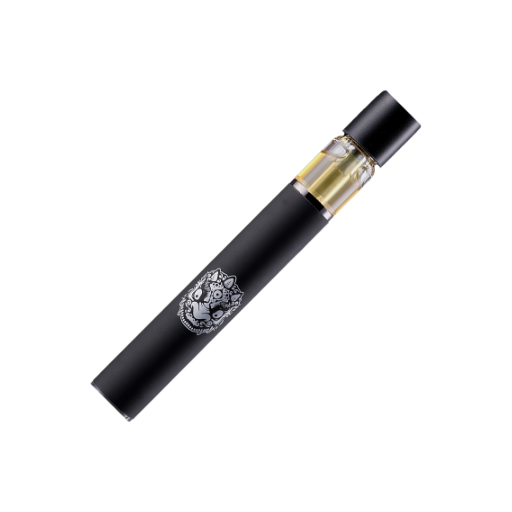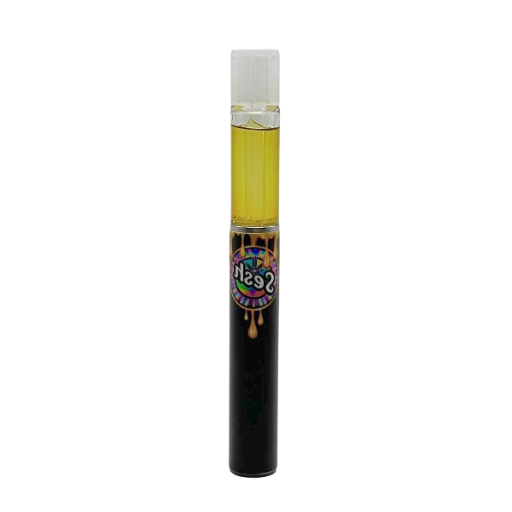The cannabis industry is continuously evolving, driven by innovations and consumer demand for cleaner, high-quality products. Among these advancements, hash rosin vapes have emerged as a standout trend, widely acclaimed for their purity, potency, and flavor profile. This blog aims to provide a comprehensive exploration of hash rosin vapes, detailing their production process, their appeal in the modern cannabis market, and the reasons behind their growing popularity among connoisseurs and casual users alike.
What exactly is hash rosin and how is it made?

Understanding the process of creating hash rosin
Hash rosin is a cannabis concentrate that can be produced without the use of solvents and undergoes a complex mechanical process in its extraction. The production of hash rosin starts with good quality hash that is frequently obtained from ice water hash. The latter is an extraction method that uses cold water, mixing, and micron screens to separate trichome heads from the plant material. Once the hash is collected, it is then dried and rosin is extracted through applying heat and pressure for some time.
- Pressing Temperature: 71 and 105 degrees Celcius where terpenes are preserved at lower temperatures and more cannabinoids are produced at high temperatures.
- Pressure: 300 to 1000PSI depending on quantity of material and quality of the hash, greater quality and quantity results in increase of pressure.
- Pressing Time: 1 to 3 minutes depending on the desired thickness and temperature.
A balance between these variables is important in order to optimize the yield, flavor, and intensity of cannabis products. The end product is a concentrate that is unadulterated and clean with rich flavor. There is no use of chemical solvents which aligns with the increasing consumer demand for natural cannabis products.
Differences between hash rosin and other cannabis concentrates
Just like other cannabis concentrates, hash rosin diers in extraction method, purity, and the absence of chemical solvents.
- Extraction Method: Hash rosin is a concentrate made of high quality cannabis hash, which undergoes a mechanical process involving heat and pressure. Unlike butane hash oil (BHO) or CO2 oil, hash rosin does net use chemical solvents for extraction. This guarantees a clean, and naturally produced product.
- Purity and Flavor: Due to the full spectrum of cannabinoids and terpenes, hash rosin has unparalleled flavor and aroma. On the contrary, most solvent-based concentrates need some degree of post-processing to remove residual solvents which may affect taste and overall composition.
- Texture and Consistency: Hash rosin is more pliable, waxy, unlike shatter or crystalline forms of solvent-based concentrates. The consistency, like other forms of rosin, is dependent on environmental factors, and extraction parameters.
Due to the lack of chemical solvents, superior taste, and premium quality, hash rosin stands out capturing the essence of cannabis fully, and resulting in a preferred choice for enthusiasts prioritizing purity in comparison to concentrates needing solvents.
The role of trichomes and plant material in hash rosin production
Trichomes are responsible for the cannabinoids and terpenes necessary for both potency and flavor, making them fundamental in the creation of hash rosin. Ice water extraction is one of the many methods for harvesting these trichomes because it avoids additional contaminants such as plant material all while maintaining the integrity of the resin. Heat and pressure are then used to separate the resin in the form of rosin.
- Temperature: Pressing usually takes place within a range of 160°F and 220°F. Terpene preservation is optimal at lower temperature regions, albeit being unfavorable for yield consistency. Increasing the temperature range often improves yields, however, some more volatile terpenes will be lost in the process.
- Pressure: Depending on the material type (hash, dry sift) and moisture content, the pressure applied ranges anywhere from 300 to 1,500 psi.
- Moisture Content: The input material must maintain and optimal moisture balance for resin production, generally fresh-frozen or cured cannabis sits in the range of 55%-62% relative humidity for ideal moisture.
Focusing on the trichomes alone within these technical requirements allows for a consistent production of high-end solventless hash rosin and guarantees a superior quality product.
How does vaping hash rosin compare to other consumption methods?

Exploring the benefits of vaping hash rosin
When it comes to preserving flavor, potency, and efficiency, the major consumption method hash rosin offers, vaping has the upper hand. Users are able to savor the full terpene profile of hash rosin’s flavor and clean it out much more efficiently than smoking by removing the combustion factor. It is also much more beneficial in terms of cannabinoids remaining intact, producing higher potency and greater therapeutic healing.
Temperature management of vaporizers is significant in the maintenance of quality, therefore, is also an important factor to consider. For optimal results, the ideal temperature range for vaporizing hash rosin is between 480°(248°C) – 530°F (277°F), as this range maximizes the vaporization of cannabinoids while preventing the destruction of terpenes. This controlled burn reduces the amount of harmful tar and other toxins created, improving the health compared to combustion processes.
Apart from the efficiency vaping provides, it has been noted that the effects of vape are felt more rapidly due to the vaping allowing for easy absorption of the active compounds vaporized through the nose.
Hash rosin vapes vs. traditional dab rigs
With hash rosin vapes and traditional dab rigs, some notable differences arise in convenience, efficiency, and overall user experience. With hash rosin vapes, users can enjoy solventless concentrates without the hassle of setting up the device. These devices are usually equipped with temperature control settings which, when operated, heat the device to a specific temperature and burn the hash rosin without incinerating the sensitive terpenes and cannabinoids within it.
In contrast, traditional dab rigs require the user to go through a much more tedious process, such as using a torch to heat the nail while waiting for the proper time to vaporize the rosin. While this approach is more customizable, it may be less practical for beginners or people who are constantly on the go. Furthermore, dab rigs are capable of receiving much larger doses, thus delivering more potent hits, making them ideal for seasoned users who prefer potency over portability.
Examined from an efficiency standpoint, hash rosin vapes offer tremendous waste savings over rigs, where the only byproduct of improper temperature control is partially vaporized material. Modern vapes also come with newer ceramic or quartz parts that evenly disburse heat, further improving the flavor and effectiveness of the session. In the end, both methods come with their strengths, however, the determining elements are usually tied to the user’s desired level of convenience, control, and overall experience.
Flavor and potency differences in hash rosin vaping
Hash rosin vaping delivers an unmatched flavor experience while maintaining the highest potency due to the extract’s nature. This type of vaping retains the full spectrum of terpenes and cannabinoids contained in the original plant material, creating a rich flavor and providing an entourage effect where cannabinoids and terpenes work together to improve the user experience.
- Terpene Retention: The unique flavor of rosin in hash is also attributed to having over 4-10% of terpenes by weight, depending on the cultivar and extraction process. The low temperature used in pressing, which is around 160°F to 220°F, sustains these volatile compounds, ensuring there is minimal degradation.
- Cannabinoid Potency: What remains consistent in the use of hash rosin is the potency, which ranges from 60-80% THC alongside the use material and the refinement post-extraction. Compared to flowers or lower-grade concentrates, this type of vaping is ensured to deliver a powerful effect due to the high potency of the hash rosin.
- Vaporization Temperature: Both flavor and potency are greatly influenced by vaporization temperatures. For the most ideal flavor, users are recommended to set the vaporizer temps between 315°F which is the boiling point of linalool and 430°F which is the boiling point of certain cannabinoids such as THC. Exceeding 450°F increases the harshness of the vapor while decreasing flavor by degrading terpenes.
With skillful adjustment of such factors, hashing rosin vaping can offer an experience that optimizes the flavors and effects of the rosin while protecting the natural plant constituents.
What are the advantages of using live hash rosin in vapes?

Understanding live hash rosin and its unique properties
As a result of its harvesting technique, live hash rosin possesses the greatest level of purity and preserves the most natural plant metabolites; it is extracted using fresh frozen cannabis, minimizing the loss of terpenes and cannabinoids. This purging method is solventless, allowing for the creation of a chemical-free and pristine concentrate.
Concentrates are used in vaporizers to achieve the desired effect from combined and unique terpenes while experiencing robust effects. The live hash rosin delivers on both fronts when vaporized; to further enhance its performance, I vaporize between 315°F and 430°F to preserve volatile terpenes while activating delta-9 tetrahydrocannabinol. Terpenes break down over 450°F leading to a harsher vapor. Because of this, I make sure to stick to my preferred temperatures.
Keeping within these factors allows for a subtle, yet potent, experience with live hash rosin while ensuring the integrity of the extract’s quality is intact.
Comparing live hash rosin to cured hash rosin in vapes
The production methods and chemical makeup of live hash rosin and cured hash rosin differ significantly, leading to marked variances in potency, flavor profile, and overall performance during vaping. Live hash rosin is produced from freshly frozen cannabis, making the volatile terpenes and cannabinoids capture a greater amount. This causes the flavor and aromatic complexity to be more vibrant. Cured hash rosin, on the other hand, is made from dried and cured cannabis material which results in a concentrate that is more stable and mildly less dense in terpenes, producing a subtly sweet and sour flavor.
From a more technical viewpoint, live hash rosin requires consistent temperature control during the vaping process to be fully enjoyed, making it an active participant while mining its terpenes. During low temp dabbing, the optimal temperature range lies between 315°F–and 370°F. Cured hash rosin, on the other hand, is more stable and can withstand higher temperatures, ranging from 375°F–430°F. This allows for better activation of cannabinoids such as THC and streamlines the chances of losing terpenes during lower temp dabbing. With either type, going above 450°F should be avoided as this will strip terpenes and ruin the taste qualitatively.
Maximum performance can be achieved through the use of cured hash rosin, which presents a more well rounded balance of flavor and potency durability. For those looking for a fresher, more robust flavor experience, live hash rosin is the preferred option. Both options can achieve optimal flavor and potency through carefully managed tempered settings, however, the unique chemical compositions of both need to be considered.
Are hash rosin vapes better than solvent-based concentrate vapes?

Solventless vs. solvent-based extraction methods
Methods for creating hash rosin, for example, utilize a mechanical device, as well as temperature, to extract cannabinoids and terpenes bypassing the use of chemical solvents. This method maintains the original terpene profiles, making for an enhanced flavorsome experience. Using heat (usually within the range of 160°F to 220°F) and pressure makes it possible for the extraction to take place without significant chemical change.
On the contrary, butane, propane, and ethanol are examples of solvents used to dissolve and extract cannabinoids and terpenes through a solvent-based approach. Such methods usually need to undergo additional refinement processes, for example, winterization or purging, to eliminate remaining solvents. Although there is greater efficiency in obtaining larger amounts of concentrate with solvent-based methods, terpene loss through exposure to solvents and heat can still occur. Degradation of terpenes and other chemicals is common in excessively high temperatures, known to be over 300°F. Having proper tools and good techniques, however, lowers this risk considerably.
The analysis of rosin vapes suggests that, in comparison to other solvents, rosin vapes provide better efficiency in terms of flavor and terpene richness. On the other hand, solvent vapes prove more efficient in terms of product yield and cost per unit. These advantages come at the expense of telomere preservation which is critical for vapes without solvents.
Health considerations: hash rosin vapes vs. BHO vapes
Integrating medical marijuana research faces challenges due to the large scope of this field, providing standards and definitions as well as addressing the issues in discrimination taste, and advertising that could potentially hurt the industry more than it benefits. For instance, from a health point of view, the main issue that springs to mind is the methods of production and the remaining substances that could be termed unwanted. During the creation of hash rosin vapes, there are no chemical solvents used, only heat and pressure. This avoids the problem of residual solvent contamination that butane or propane could bring, should certain standards in the production of BHO vapes be neglected. This makes some people prefer, for instance, solventless hash rosin because it poses less risk of exposure to chemicals.
On the other hand, BHO vapes are produced much quicker. Though BHO vapes might seem like a more efficient way to store cannabis because of the easier process, even with purging, it is likely to have some residual solvents traced within. These products undergo a series of processes so they can be called BHO, where regulatory bodies set an evaporation or remaining solvent amount, which is judged as extremely dangerous.
Moreover, another health-related issue is the change in the production of terpenes. The use of high temperatures in BHO extraction opens the door for the loss of very delicate terpenes during the process and therefore, does not offer their full potential therapeutic benefits. On the contrary, less sophisticated means of processing are less likely to destroy some of these compounds so it is to be expected that hash rosin extraction will do much less damage to these compounds.
Ultimately, the decision is personal with health concerns coming first; in which case hash rosin is the healthiest option due to its superior extraction processes, while well-made BHO can be regarded as safe as long as it adheres to industry regulations.
How do I properly use and maintain a hash rosin vape?

Tips for optimal hash rosin vaping experiences
- Pick the Correct Temperature: When vaping hash rosin, keeping the temperature between 400°F and 500°F boosts flavor and effect. Preserving terpenes occurs at lower temperatures, and cannabinoid vaporization is greater at higher temperatures.
- Preheat the Device: Your vape device should be sufficiently preheated to avoid unheated areas. This increases production efficiency and ensures kinks in overheating don’t result in wasted materials.
- Practice Proper Dosing: The chamber shouldn’t be overloaded, as this reduces workflow. Follow the manufacturer’s recommended chamber capacity. The sweet spot is anywhere between 0.1g-0.3g depending on the device specs.
- Clean Regularly: Performance can go downhill as residue builds up unsightly. Ensure there are no blockages or flavor contamination by cleaning mouthpieces and chambers every few sessions using 70-90% isopropyl alcohol and a soft cloth or cotton swab.
- Store Hash Rosin Properly: Ensure terpenes and cannabinoids are not exposed to air, heat, or light by keeping hash rosin in dark, cool places between 32°F and 50°F, in airtight, nonstick containers.
- Check Battery Health: For devices with adjustable power, ensure the unit’s compatible voltages are followed. Most hash rosin vape devices don’t exceed 3.7V to 4.2V.
By following these practices, you help yourself achieve the most efficiency, flavor, and potency from your hash rosin whilst also prolonging the life of the vaping device.
Maintaining and cleaning your hash rosin vape device
Consistent performance, flavor integrity, and device longevity of your hash rosin vape device can only be achieved through proper regular maintenance as heedless maintenance will hamper all three of these device factors for optimum performance. Below are detailed recommendations for maintaining and cleaning your device effectively:
- Regular Cleaning of Components: Use a warm solution of isopropyl alcohol and a soft cloth or cotton to clean the vapor pathway, mouthpiece, and chamber every two or three sessions. This will prevent any resin build up from obstructing airflow as well getting old flavor out of the device. Ensure that every cleaned component is left aside to air dry completely before reassembly.
- Batteries and Electric Contacts: Now and then check battery connections for any residue or rust. Contact points should be cleaned with a piece of cloth or alcohol wipe to ensure that steady power is delivered. Check the battery voltage range from 3.7V to 4.2V to ensure that the device is not getting overloaded or underpowered.
- Chamber Maintenance: After every single session verify the chamber for any leftover residue. Sillicon or non-abrasive tools should be used to scoop out excess material as metal tools can cause scratches on the ceramic or quartz chambers which is undesirable.
- Filter and Airflow Inspection: Numerous devices will have airflow control or filter covers. Inspect for obstruction regularly and cleanse with compressed air or a cotton swab soaked in alcohol. Good airflow prevents overheating of hash rosin and assures good vaporization.
- Calibration: If your device has a temperature control feature, then make sure that you calibrate it with the manufacturer’s requirements. Generally, hash rosin vaporizes between the range of 480°F and 550°F. If it goes outside this range, then it might burn or produce terpenes too much with no vapor.
- Storage Conditions: While not in use, a device should be stored in a dry place lower than 85°F to prevent battery or other components from degrading over time.
If you take care of these procedures properly, you will ensure the performance of the hash rosin vape device is maximized alongside with the purity of the vaping experience. It can also improve the costs of maintenance, as well as the efficiency of the device.
Storing hash rosin vape products for longevity
To maintain the quality and chemical nature of hash rosin vape rosin products, appropriate storage methods must be adhered to.
- Temperature Control: Hash rosin must be stored at a temperature range of 40 to 70 degrees Fahrenheit. Higher temperatures may result in the degradation of terpenes and destabilization of cannabinoids, while lower temperatures may cause the concentrate to crystallize or harden not the desired form.
- Humidity Levels: An ideal relative humidity range for storage purposes is 55%-62%. Higher numbers lead to the possibility of microbial infection and breed unwanted products while lower levels extend the dryness possibilities which adversely affects the product and its use.
- Light Exposure: Hash rosin vape products should not be exposed to direct sunlight or wide-spectrum UV light. The best results can be obtained by using opaque or UV light-blocking containers as any light exposure speeds up the degradation of terpenes while making rosins less effective.
- Air Exposure: In terms of oxidization, hash rosin vape products should be protected from oxygen as it alters the color, flavor, and potency of the concentrate. Reducing contact with air like using airtight containers or vacuum-sealed containers are useful.
- Container Material: To maximize the safety of the content, containers must be constructed with nonreactive materials like glass or medical grade silicone. Strongly advised against are cheap plastics as they may contain dangerous leeching chemicals or absorb terpenes whilg compromising quality and safety.
Following these recommendations guarantees that hash rosin vape products will have their potency, flavor, and overall quality, which dramatically enhances their shelf stability. Appropriate storage conditions greatly minimize degradation risks and preserve the quality of products over time.
Reference sources
Frequently Asked Questions (FAQs)
Q: What is hash rosin and how is it made?
A: Hash rosin is a solventless cannabis concentrate made by applying heat and pressure to cannabis plant material, typically high-quality hash or kief. This method of extraction releases the potent trichomes without using any solvents, resulting in a pure and highly potent form of cannabis concentrate. It’s made using a rosin press, which squeezes the material to extract the resinous oils.
Q: How do hash rosin vapes differ from other cannabis vape products?
A: Hash rosin vapes are considered premium products in the world of cannabis due to their purity and potency. Unlike other vape products that may use solvents in the extraction process, hash rosin vapes contain only the pure essence of the cannabis plant. They often provide a more flavorful and potent experience compared to traditional vape pens, and are made from high-quality, solventless extracts.
Q: What are the benefits of using hash rosin vapes?
A: Hash rosin vapes offer several benefits, including: 1. Purity: They contain no solvents or additives. 2. Potency: They are highly concentrated forms of cannabis. 3. Flavor: They preserve the natural terpenes of the cannabis strain. 4. Convenience: Vape pens are discreet and easy to use. 5. Consistency: They provide a reliable and consistent dosage. 6. Health: They offer a potentially safer alternative to smoking.
Q: Are rosin products available at most dispensaries?
A: Yes, rosin products are becoming increasingly available at dispensaries due to their growing popularity. Many dispensaries now offer a range of rosin products, including vape pens, concentrates, and even rosin gummies. However, availability may vary depending on your location and local regulations. It’s best to check with your local dispensary for their specific selection of rosin products available.
Q: How does live rosin differ from regular rosin?
A: Live rosin is made from fresh frozen cannabis plant material, while regular rosin is made from dried and cured cannabis flower or hash. The “live” aspect refers to the fact that the plant is frozen immediately after harvest, preserving more of the terpenes and cannabinoids. This results in a more flavorful and potentially more potent product compared to regular rosin. Both are made using heat and pressure, but live rosin often commands a higher price due to its superior quality.
Q: What’s the difference between rosin and live resin?
A: While both are high-quality cannabis concentrates, rosin, and live resin are produced differently. Rosin is made using heat and pressure, without any solvents. Live resin, on the other hand, uses a solvent-based extraction method on fresh frozen cannabis plant material. Both aim to preserve the plant’s terpene profile, but rosin is considered a solventless extract, while live resin is not.
Q: Are there different ways to consume hash rosin besides vaping?
A: Yes, there are several ways to consume hash rosin besides vaping. These include: 1. Dabbing: Using a dab rig to vaporize the concentrate. 2. Adding to flower: Sprinkling rosin on cannabis flower before smoking. 3. Edibles: Incorporating rosin into homemade edibles. 4. Topicals: Some products infuse rosin into topical applications. 5. Tinctures: Rosin can be used to create potent tinctures. Always ensure you’re using these methods responsibly and by local laws.
Q: What should I look for when choosing a hash rosin vape pen?
A: When selecting a hash rosin vape pen, consider the following factors: 1. Quality of the rosin: Look for full-spectrum, strain-specific options. 2. Battery life: Ensure it’s sufficient for your needs. 3. Temperature control: This can affect flavor and potency. 4. Brand reputation: Choose reputable brands like Link Cannabis Co. 5. Extraction method: Confirm it’s truly solventless. 6. Lab testing: Verify that the product has been tested for purity and potency. 7. Price: Premium hash rosin disposables may be more expensive, but often offer superior quality.
Q: Are there any age restrictions for purchasing hash rosin vapes?
A: Yes, there are age restrictions for purchasing hash rosin vapes. In most jurisdictions where cannabis is legal, you must be at least 21 years of age to purchase any cannabis products, including hash rosin vapes. Always check your local laws and regulations, as they can vary by location. Dispensaries will require valid identification to verify your age before allowing any purchases.







